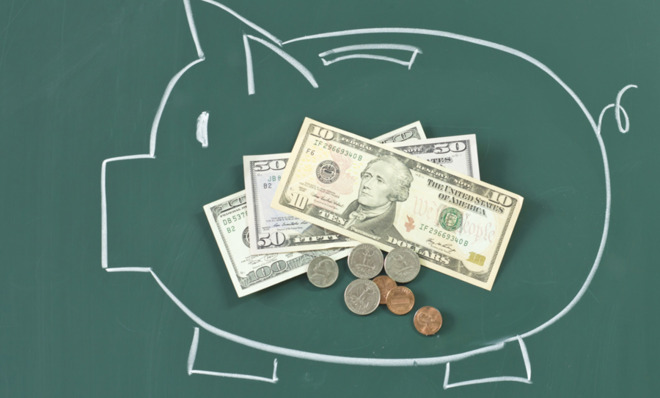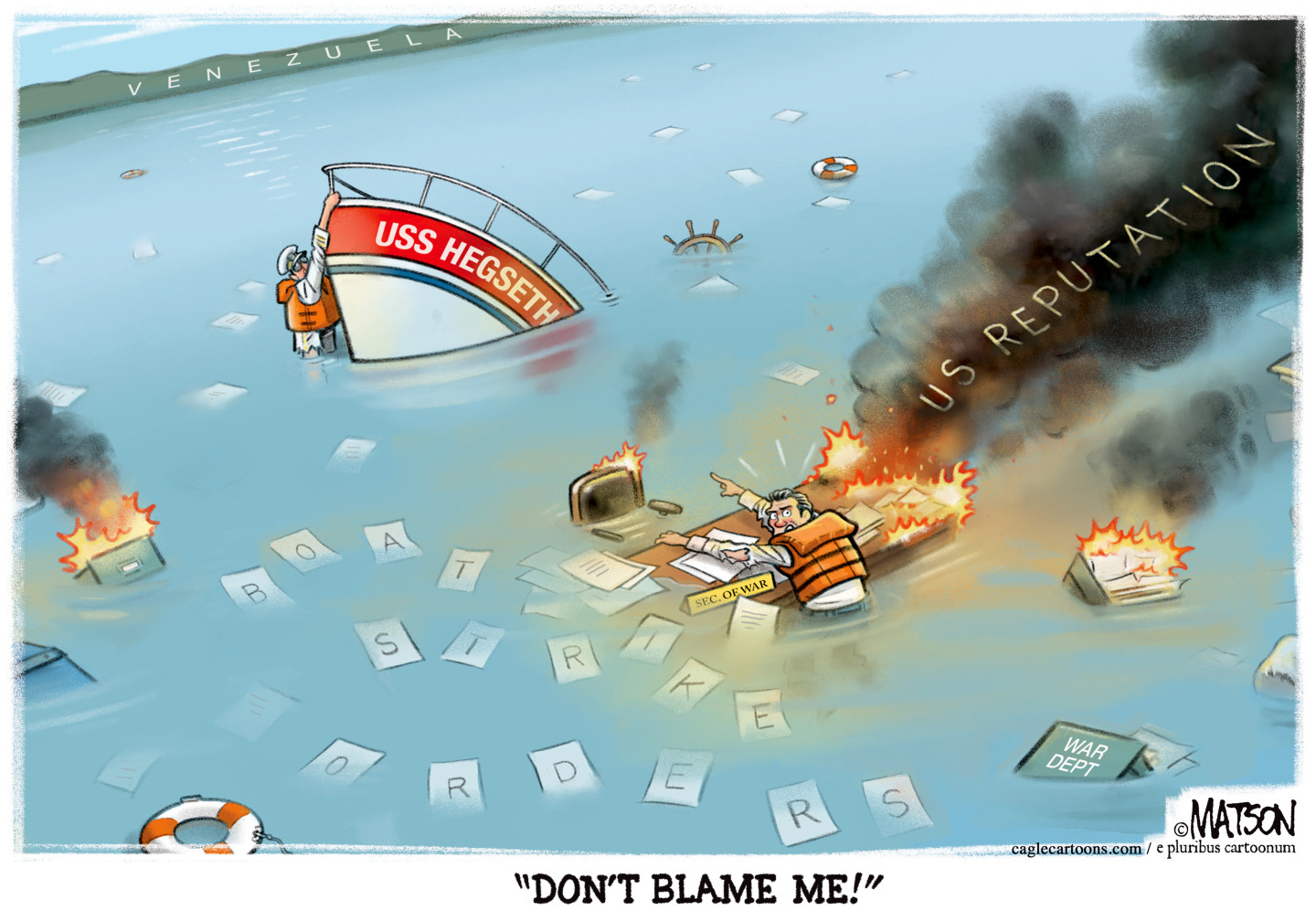5 money mistakes that even responsible savers make
Is your savings account linked to your checking account? That's a bad thing.


It's no wonder so many Americans consider saving money their number-one financial struggle: Saving money consistently takes discipline and hard work.
In fact, a survey last year revealed that more than a quarter of Americans have no emergency savings whatsoever, and half have less than three months' worth of expenses socked away.
So if you're part of the minority and are putting money away regularly, congratulations — it's an important part of laying the groundwork for a more secure financial future. But just because your balance is growing doesn't mean there isn't room for improvement in the way you save. At LearnVest, our financial planners recommend that most everyone have at least six months of net income saved up in an emergency fund, when possible.
The Week
Escape your echo chamber. Get the facts behind the news, plus analysis from multiple perspectives.

Sign up for The Week's Free Newsletters
From our morning news briefing to a weekly Good News Newsletter, get the best of The Week delivered directly to your inbox.
From our morning news briefing to a weekly Good News Newsletter, get the best of The Week delivered directly to your inbox.
Want to know some of the best practices for maximizing your savings account? We asked LearnVest Planning Services Certified Financial Planner™ David Blaylock to analyze five common savings strategies — and offer advice on how to work on adopting even better habits.
Strategy #1: "I save what's left over"
The risk with this: So you pay your bills, maybe make a few "fun" purchases too, then you transfer whatever is left over in your checking account to savings. The good news? You're diligently trying to save.
The problem with this strategy is that when you leave money that's earmarked for savings lying in your checking account, you may start thinking you have more money to spend than you actually should! "Because you feel more confident about your balance, you won't mind going out and spending more," Blaylock says.
A free daily email with the biggest news stories of the day – and the best features from TheWeek.com
It also may be harder to set savings goals for yourself because you probably never know how much money you'll be able to sock away.
Try this instead: Pay yourself first. "The first bill you should pay every month is your savings bill," Blaylock says. Of course, only take the "pay yourself first" approach if you still have funds available to cover your regular monthly bills.
How do you put this system in place? Simply create an automatic transfer from your checking account to your savings, either from every paycheck or at the beginning of the month. If you "set it and forget it," you just might be shocked by how quickly your nest egg can grow.
Strategy #2: "I transfer money into a savings account linked to my checking"
The risk with this: You're flexing your savings muscle on a regular basis, which is great! And having your savings account linked to your checking definitely is convenient, but you risk dipping into your savings to make ends meet — or even to fund an impulse purchase — because that money can be so easy to get to.
Try this instead: While it's advisable to keep a portion of your savings in an easily accessible account in the event of emergencies, it can be smart to keep the rest at a distance, in a separate "untouchable" account, says Blaylock.
"If you have to go somewhere to get that money or it takes a few days to get access, that's usually enough to deter us from spending on a whim," he says. "It's a powerful tool, especially for impulse buyers."
Opening a separate account is often as simple as finding a savings account with a bank other than where you do your main banking. But Blaylock also recommends exploring online banks, which may offer high-yield savings accounts. Usually, you can still easily access your money in online accounts, but it might take 24 to 48 hours to transfer funds once you request them.
Strategy #3: "All my savings go into one pot"
The risk with this: You're socking money away at an impressive rate — and pooling it in one account, since it's so much fun to see that balance grow, but, with this approach, it can be hard to know how much you've saved for different goals.
For example, if your emergency fund is commingled with your down-payment savings for a future house, you could easily deplete your emergency fund when it comes time to buy property. Similarly, if your baby savings are in there too, it can lead to false confidence about how much you've actually saved, because mentally you've earmarked that money twice!
Try this instead: Give yourself a more visual overview of your savings progress by creating separate sub-accounts for different objectives, like your emergency savings, a down payment on a house, or a future vacation. Many online banks make this super easy, and you can even nickname your accounts so you know exactly what each one is earmarked for.
There's a tendency to go crazy with this idea and parse your savings into 50 different categories, Blaylock says — but, for clarity and sanity's sake, resist. Keep your accounts limited to your top three to four objectives, and revisit them on a regular basis as your finances and objectives change.
Strategy #4: "I save big chunks of money when I can"
The risk with this: If you only save big chunks of money whenever you get a windfall or feel like you can afford it, you may be an all-or-nothing saver who gets a thrill when you move the needle in a big way, or someone who tends to "borrow back" that savings from themselves. Meanwhile, one way to savings happiness is saving a manageable amount on a regular basis.
Try this instead: Come up with a real budget for how much you have to save each month instead of guessing. And the same goes for windfalls: Decide on a specific percentage of the money you'll transfer to savings.
"We all lead busy lives, and the last thing we need to do is keep moving money around all the time because that causes stress," says Blaylock. For instance, if you get disappointed in yourself for having to take the money out of savings, it might derail you from saving in the future.
The solution? Pick a savings goal that is sustainable — and stick to it. You can always revisit the amount if you think you can consistently start saving more.
Sticking to a set monthly figure can also help get you off the emotional rollercoaster that can come with saving and unsaving. A lot of clients experience "feelings of exuberance when they save and then feelings of guilt when they have to take the money back," Blaylock says. "Steady is better."
Strategy #5: "I save as much cash as I possibly can"
The risk with this: Saving is your top priority, and you can get borderline obsessive about it. You may be so intent on seeing your savings balance climb that you ignore other financial priorities — and deprive yourself of the occasional treat that would keep you happy and sane.
On the other side of the coin, there's the type who may love having cash on hand a little too much. Instead of investing your money, you prefer to keep all of your savings liquid — but you may be missing out on the opportunity to let compound interest work its magic.
Try this instead: Make sure you're not saving at the expense of other goals, like paying off your student loans or paying down credit card debt. "These things have to be worked on in tandem," says Blaylock. "Anyone who thinks they should focus on just one area of their financial lives … it's generally not the right approach."
Though there is one exception to that maxim, Blaylock says: "If you don't have one month of net income saved up in your emergency fund, you should consider forgoing all other goals until you get that saved," he says. After that, you can work on putting some money into savings, some toward debt, some toward any other financial goals, like your house down payment or a vacation fund. And don't forget to treat yourself now and then. A new handbag or a fancy dinner on the town can be all the more enjoyable knowing you can afford it.
Once you top off your six-month emergency fund? Blaylock says it's time to shift your strategy. Since "cash pays too little," he recommends putting long-term savings you won't need for at least five years (money earmarked for retirement or college, for instance) into an investment account in order to potentially grow your money.
This story was originally published on LearnVest. LearnVest is a program for your money. Read their stories and use their tools at LearnVest.com.
More from LearnVest...
-
 5 criminally underrated cartoons about Pete Hegseth’s war crime
5 criminally underrated cartoons about Pete Hegseth’s war crimeCartoon Artists take on USS Hegseth, rats leaving the sinking ship, and more
-
 Can Mike Johnson keep his job?
Can Mike Johnson keep his job?Today's Big Question GOP women come after the House leader
-
 A postapocalyptic trip to Sin City, a peek inside Taylor Swift’s “Eras” tour, and an explicit hockey romance in December TV
A postapocalyptic trip to Sin City, a peek inside Taylor Swift’s “Eras” tour, and an explicit hockey romance in December TVthe week recommends This month’s new television releases include ‘Fallout,’ ‘Taylor Swift: The End Of An Era’ and ‘Heated Rivalry’